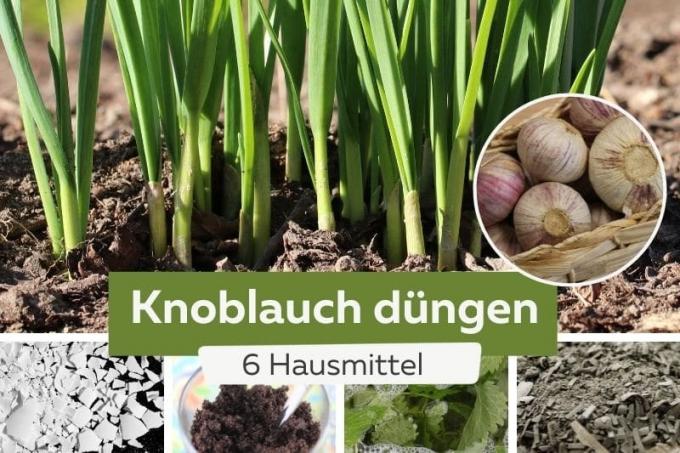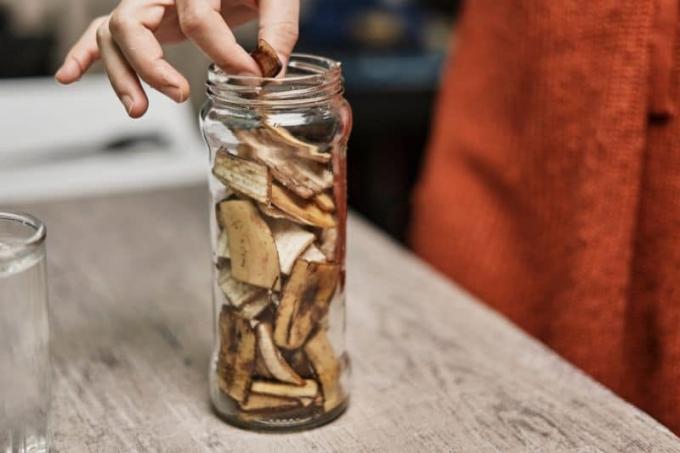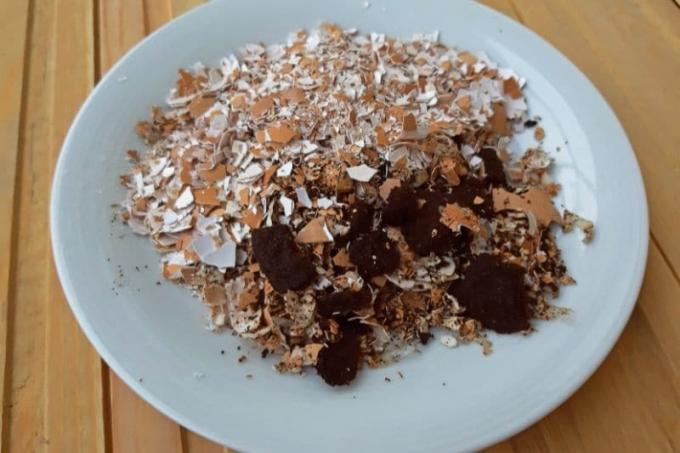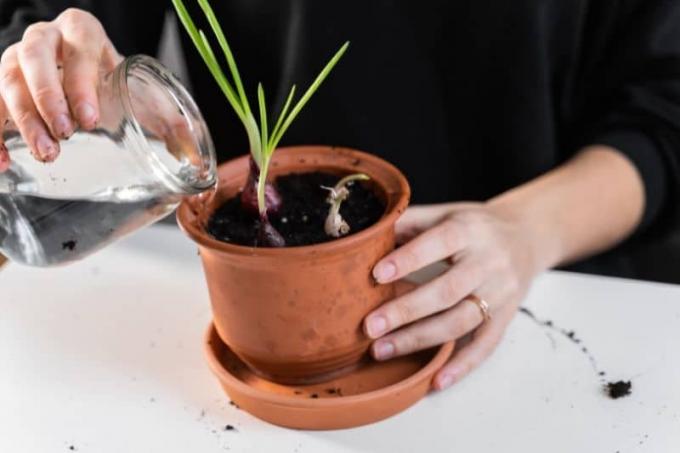
There are some home remedies that are ideal for fertilizing garlic (Allium sativum) are suitable. In this article, you will learn what they are and how they should be used.
In a nutshell
- Correct dosage and fertilizer intervals important to avoid over-fertilization
- A maximum of two fertilizer applications per year is usually sufficient
- Administer home remedies with nitrogen, phosphorus and potassium
- no nitrogenous home remedies during fruit ripening
Table of Contents
- ash
- banana peels
- nettle manure
- eggshells
- vegetable water
- coffee grounds
- frequently asked Questions
ash
Ash is an important source of minerals and enriches soil with lime. garlic thrives best in a soil with a pH between 5.5 and 6.5. If the value is higher, ash fertilization is recommended. It is important that only plant ash is used because it promotes microorganisms and thus prevents soil compaction. A quick effect is achieved through the liquid application. To do this, put the ash in hot water, let it steep for two days, and then water or spray the root area with it.
- Dosage: 200 to 400 grams per square meter
- Fertilization interval: every three to four years
- Application period: in spring or autumn

banana peels
While summer garlic should be stimulated to grow in the spring using household fertilizers, Winter Garlic especially humus to strengthen you for the cold winter months. The best way to add humus to the soil is to use banana peels, which release a high proportion of potassium into the soil. Potassium is ideal for protecting plants against cold and disease. To do this, fresh or dried banana peels are cut into small pieces and worked into the surface of the soil.
- Dosage: 100 grams of banana peels per plant
- Fertilization interval: twice with an interval of four to six weeks
- Application period: mid-September when planting and between the end of October and the end of November

nettle manure
nettle manure is a well-known home remedy for plant strengthening and nutrient delivery. Garlic needs this at the latest when yellow leaf tips or leaves appear at the beginning of the growing season. Then there is usually a nutrient deficiency and the plants lose more and more energy. With stinging nettle manure or one that is prepared more quickly nettle-Sud, nutrients and in particular nitrogen are provided quickly, which restore healthy growth. For both variants, stinging nettles are to be immersed in cold water. Manure has two to three weeks to ferment. The brew is ready to use after just a few hours of steeping.
- Dosage: 1 kilogram of fresh nettles or 200 grams of dried nettles per 10 liters of water
- Fertilization interval: in the event of deficiency symptoms, once a week until recovery; otherwise once or twice a year
- Application period: spring to mid-May and/or in autumn

Tip: Dilute nettle manure liberally with additional water before use, as too concentrated it can cause burns when fertilizing flat-rooted garlic.
eggshells
Egg shells are known to be calcareous, which is why they can lower soil pH. They offer an alternative to ash fertilization. However, they have a lower lime content, so they can fertilize your garlic with you more often. Using a hammer, blender or hand blender, crush the peels into powder until they have dissolved in the water after a few hours. When watering the root area afterwards, make sure that the above-ground parts of the plant are not wet. The lime could close the leaf pores and impede photosynthesis.
- Dosage: two to three eggshells per one liter of water
- Fertilization interval: as needed or every three to four months
- Period of use: all year round

Tip: You can use the shells of both raw and boiled eggs. However, you should always make sure that there are no leftover eggs on the shells, as these can attract bugs and give off a common smell.
vegetable water
Cooking vegetables robs them of many nutrients and minerals that remain in the water. This makes the vegetable water an ideal liquid fertilizer for garlic plants. Vegetable water from types of cabbage such as broccoli and cauliflower and asparagus is best. Once you have removed the vegetables and the water has cooled down, you can use them for watering.
- Dosage: 300 to 400 milliliters per plant
- Fertilization interval: every two to three weeks
- Application period: February to early September

coffee grounds
If garlic only grows sluggishly, if the plant shows dried-up areas and it is increasingly losing stability, this may be due to supply problems. The reason for this is the pH value. If this is too high, the absorption of nutrients is impaired because calcium, iron and phosphate dissolve less well and can only be absorbed to a limited extent as a result. Fertilizer helps here coffee grounds, which lowers the pH value and keeps it stable with regular administration. Allow the coffee grounds to cool and dry well. Then simply apply it over the root area and distribute it evenly.
- Dosage: coffee grounds of half a cup of coffee per plant
- Fertilization interval: every two to four months, depending on soil conditions
- Application period: spring to autumn

Tip: Make sure that the coffee grounds are completely dry before administration otherwise it will quickly form mold and do more harm than good for garlic plants is. It is best to lay it out on kitchen paper in a dry place and wait a day or two before fertilizing.
frequently asked Questions
Usually yes. Liquid fertilizer reaches the roots faster than fertilizer that is applied as a layer to the surface of the soil and/or is only worked in superficially.
This mainly depends on the soil conditions. If the pH value is too high or too low, you should definitely use suitable home remedies to fertilize. If garlic grows on depleted soil, home remedies are essential as suppliers of nutrients.
Nitrogen promotes the growth of above-ground green parts of plants. The plants shoot up and consume a lot of energy. This is then missing for the growth of the garlic bulbs. As a result, they do not develop properly and usually remain very small.



